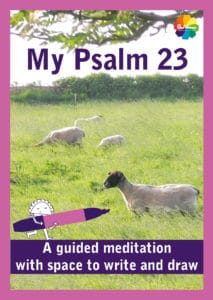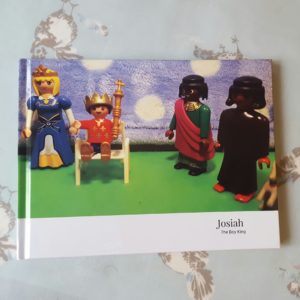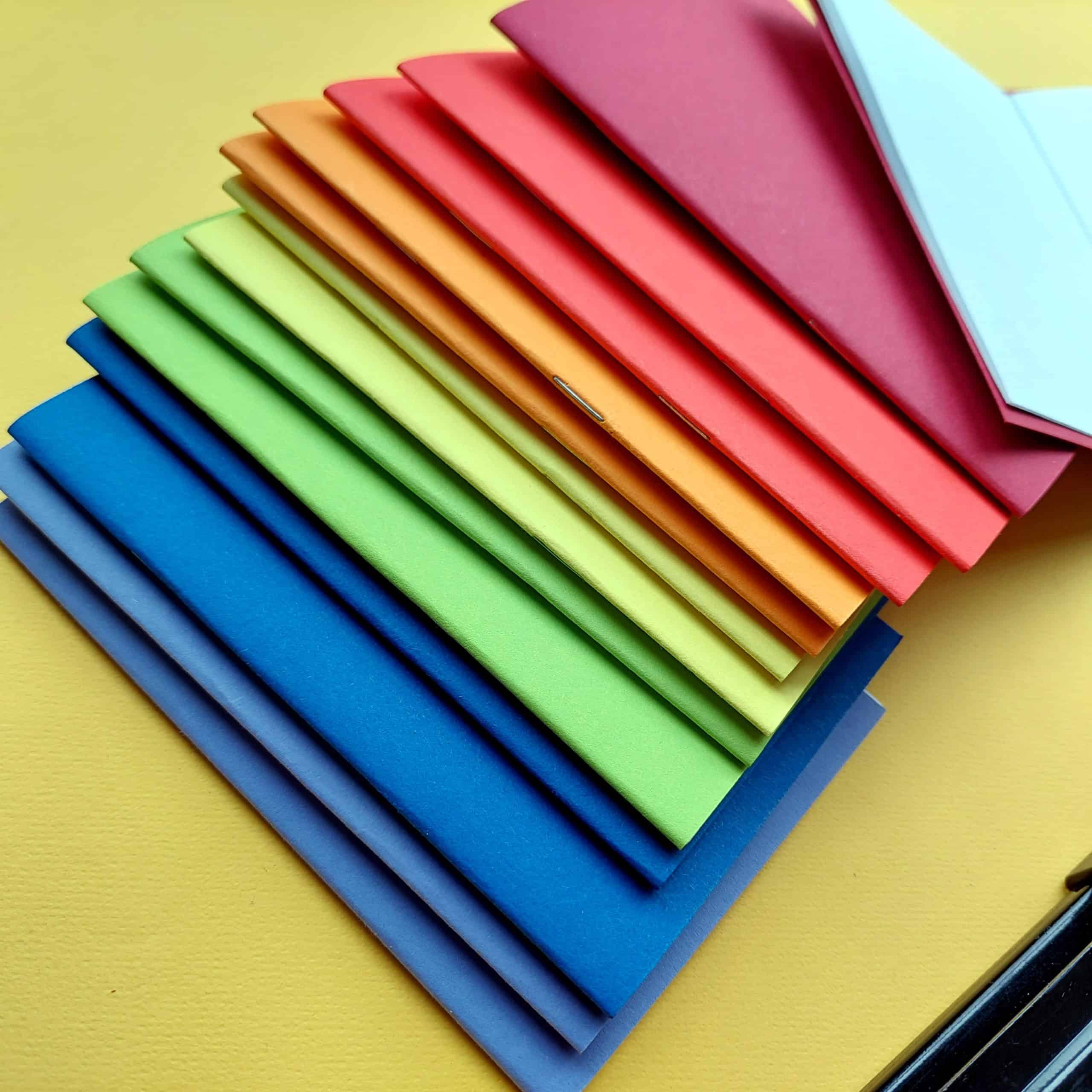
I love mini-books!
They are so cute and so quick and very satisfying to make. I recently made this rainbow set for a group of 12 children. It only took me about an hour and only used paper, card and staples.
I have a lot of mini-books, both ones I’ve bought and ones I’ve made. I often buy little notebooks in sales, then cover them with patterned paper and use them for example, to write a verse of a psalm on each page. This makes the psalm easier to learn and easy to pop in a pocket.
I also really love making mini-books, as this means I can make exactly what I want it. I have two main ways I like to make mini-books but first let me share with you why I love using them and what you can use them for.
Mini books are great for faith at home because:
- They reduce overwhelm and guilt
Mini-books by definition are small and short, so whatever you use them for – for example, to re-tell a story or to do a daily prayer journal – it’s more manageable as there’s not a whole big book to complete. - They are the ultimate bespoke item
Mini-books can be made specifically for exactly what you are doing right now. The options are endless! For example, if you want to learn a psalm or to develop a habit of regular prayer and bible reading, you can use a mini-book to help you. (See below for some of the ideas,) - They are cheap
If the activity you use your book for doesn’t work, you haven’t wasted money, and it’s easy to try again another time. - They are easy to make
A simple mini-book uses just paper and one scissor cut and takes less than two minutes to make. If you’re planning to make more than one or two, you might want to use a guillotine for the cutting. Cheap and easy to make also means you can make as many as you want. This enables you to experiment with something, repeat it if it works, or if it doesn’t try something new. - They are pocket-size
This makes them super cute and very portable, so you can take them with you. This is really useful especially if you’re using a mini-book for regular prayer or journaling. It also means they don’t take up much space to keep on a shelf or bedtime table.
How could you use mini-books in your faith at home? Here are 8 ideas:

1 Bible character mini book
It’s really easy to turn a notebook into a little character. Simply trim off the top corners making the top a little rounded like a head. Then add a face and some simple clothes on the cover and tah-dah!
You can make multiple books and tell the same story from the perspective of different characters in the story, which really opens up the story, and helps you find new ways of seeing what’s going on.
The size of the book limits how much you can draw or write, meaning you have to process the story quite a bit to put just the most important parts in your book.
The best mini-book to make for this are these ones. You need two sheets of A4 paper, scissors but no glue! Here’s a Minion version.
Next, you get to draw or write inside, telling their story. You could tell the story about them or tell it in the first person as if you are them.
You can make multiple books and tell the same story from the perspective of different characters in the story, which really opens up the story, and helps you find new ways of seeing what’s going on. For example, the story of the Exodus from Egypt from the point of view of Moses, Pharaoh, Miriam and Zipporah! Or an Israelite child and an Egyptian child. You can see here how we did this for the Christmas story. The size of the book limits how much you can draw or write, meaning you have to process the story quite a bit to put just the most important parts in your book. The best mini-book to make for this are these ones. You need two sheets of A4 paper, scissors but no glue! Here’s a Minion version.
This is the activity in the Mephibosheth mini-mag out soon, which gives you the paper you need and full instructions.
2 Chat with God mini book
Use a mini-book as a way to chat with God. All you need is a simple prompt question on each page of a mini-book with space to draw or write underneath.
Check out this easy-to-make mini-book which has two prompts and space on each page. (You can find more on ‘chat and catch’ prayers on the Parenting for Faith website.)
3 Thanks mini book
Make a book and write ‘Thanks’ on the front cover, then see if you can fill it with words or pictures or things you are thankful for. You could then also use it in a time of spoken prayer on your own or with others. Or share what’s in it with others and sing a thanks song to God for all the good things he’s done.
I’ve made this super-easy for you with this Thanks mini book download with space to write or draw your thanks for seven days.
4 Psalm mini book
Psalms lend themselves so well to being written one line at a time on a page of a mini-book. Doing this is a great way to learn a psalm, and a mini-book is the perfect size to carry around and use to keep reminding us of the psalm. You could write one line on a page, and keep it in a pocket, saying it out loud once a day until you can easily remember it. Then write the next line and so on,
As well as learning a psalm, a mini-book comes in handy if you want to use writing and drawing to meditate on a psalm. Simply write a verse or phrase from the psalm at the top of each page in your mini-book and leave space for writing, drawing and doodling as you ponder each word and what it might mean for you.
If you fancy having a go, there’s a Psalm mini book of Psalm 23 in the Shepherd mini-mag.
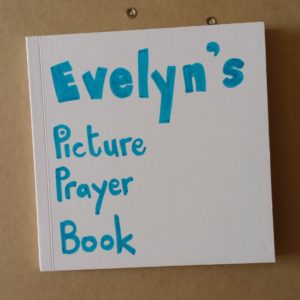
5 Prayer journal mini book
Use a mini-book to draw a picture or write the name of someone at the top of each page then write what you are praying for them and the date. You can add a person each time you pray, and also go back and pray for the same people again. It’s a great way to be able to see what prayers God has answered! For young children, you could also use a board book and glue in photos of people they know. They can then turn to the page of the person they want to pray for. You could also add into the book anything you feel God is saying for that person.
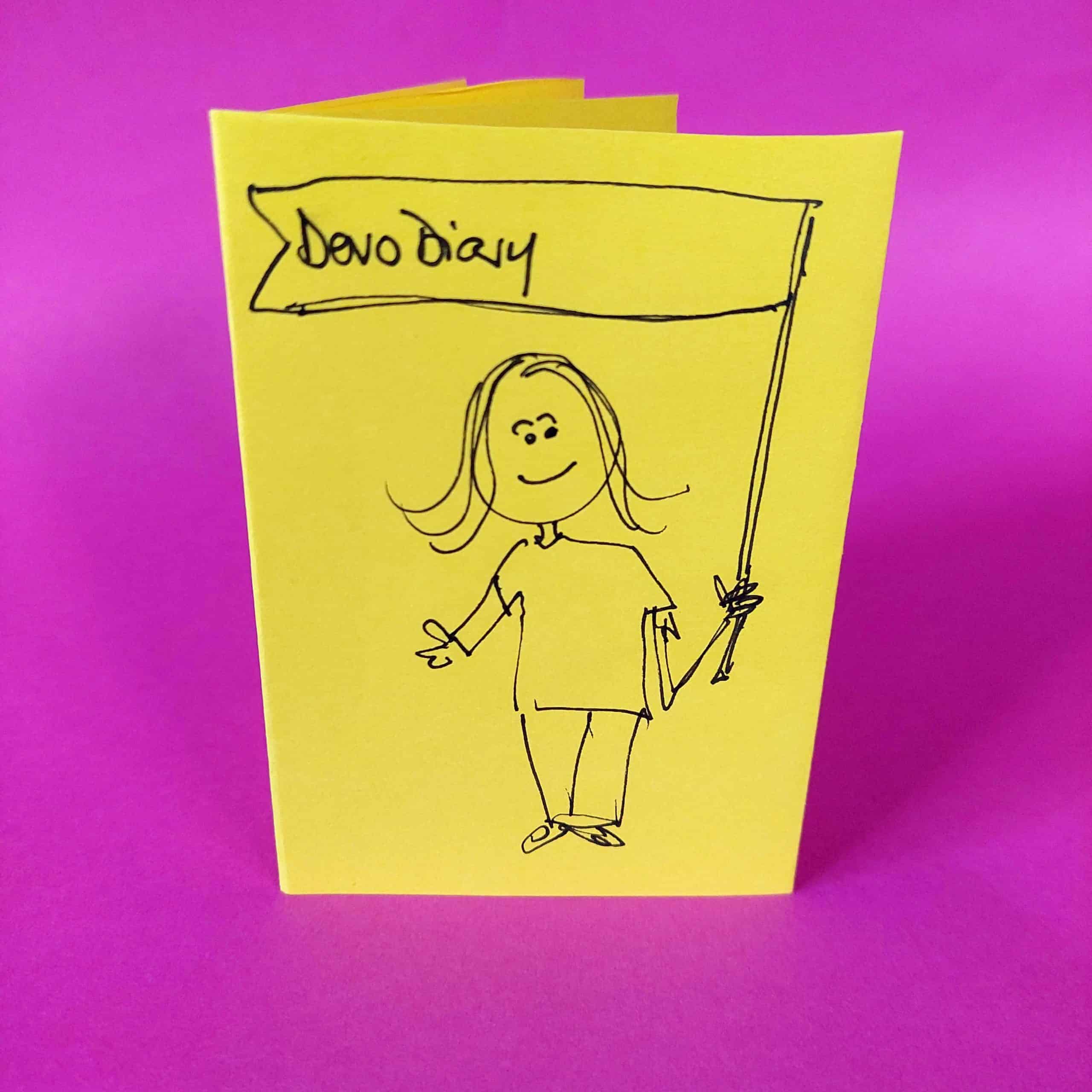
6 Devotional diary mini book
Use a mini-book to record your personal times with God. This is a more open-ended version of the chat with God mini-book. In this one you simply write your name or draw a picture of yourself on the cover then fill in a page each time you spend time with God:
Write on each page:
Today is … Most people will write the day or date, but you could draw or write the weather or a word that describes how you’re feeling today!
Thank you God for… and fill in the gap.
Today I read… Write the Bible verse/passage/story you read today. It could be the same one as last time!
I really liked… Write or draw what you liked in the Bible verse/passage/story.
I had questions about… Write or draw you questions.
I chatted with God and felt… Write or draw how you felt or what you felt God whisper to you as you listened.
Please God … Add something or someone you want to pray for.
You can mix and match these prompts depending on what you feel is most helpful for you!
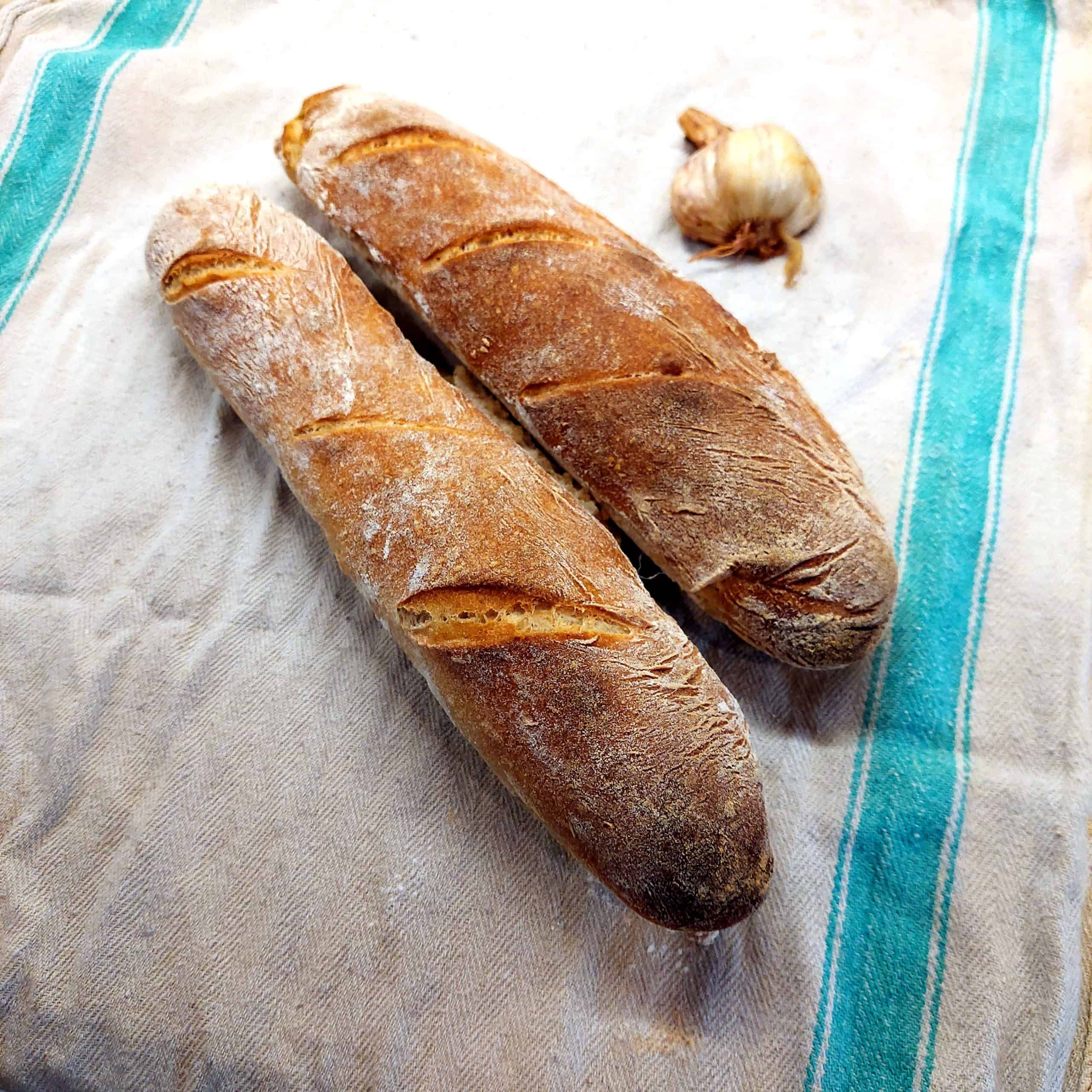
7 Bible theme spotting
Make a book and draw a picture or write a word of something you’d like to explore in the Bible on the cover, for example ‘bread’. Use each page to note down something about that theme from a different part of the Bible. One theme you could try is bread – use biblegateway to search for references of bread in the Bible, then pick 6 to read and note down your thoughts on in your theme book.
8 Share a story
Create a book of your favourite Bible story and send it to a friend to share that story with them, or read it to them live on a video call or record yourself telling the story and send it to them. We’ve had a lot of fun making books using photos of scenes of toys telling the story, such as Lego or Play Mobil. We’ve got cheap photobooks made of the pictures and added our own words to tell the story. We’ve made ones for Christmas and Easter.
I hope you’ll have a go at one of these and that it helps you in something you’re doing in your faith at home.



